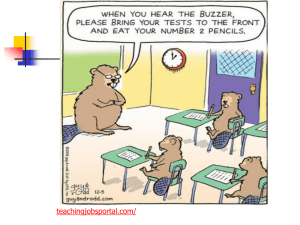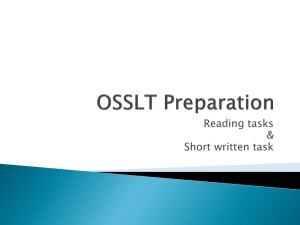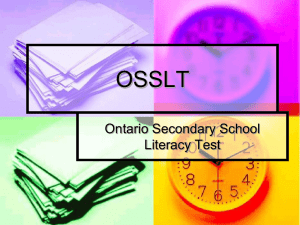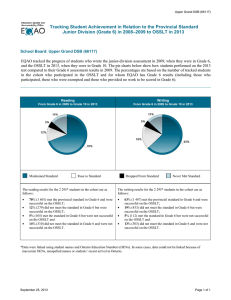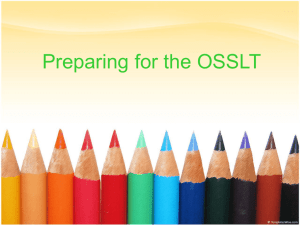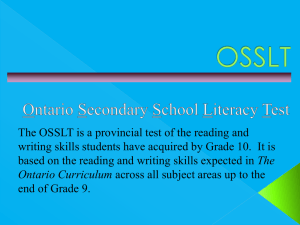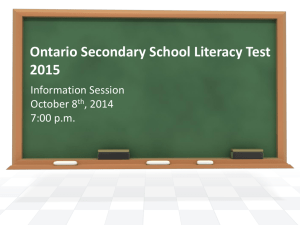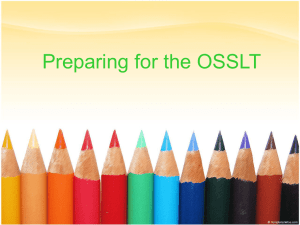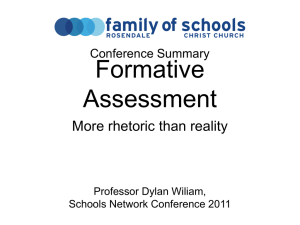Goals for the moderated marking session:
advertisement
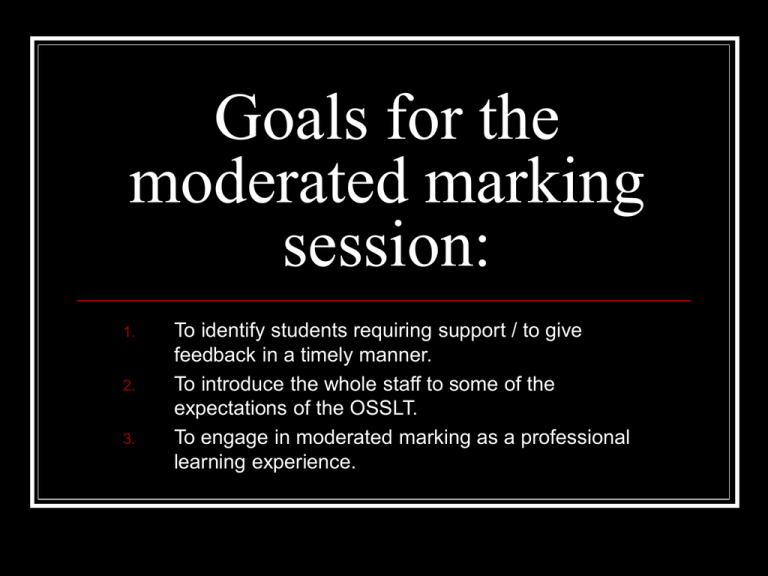
Goals for the moderated marking session: 1. 2. 3. To identify students requiring support / to give feedback in a timely manner. To introduce the whole staff to some of the expectations of the OSSLT. To engage in moderated marking as a professional learning experience. To identify students requiring support / to give feedback in a timely manner Classroom teachers have provided support to all students throughout the school year. The Special Ed., Alt. Ed., and ESL departments have provided intensive support to students in their classes. With evaluation of the “mini lits” completed today, additional supports can be provided for students who seem most “at risk” in the month prior to the OSSLT. Generalizations about areas of concern for all / many students can be made and addressed by classroom teachers in the next month. To introduce the whole staff to some of the expectations of the OSSLT All teaching staff will examine a specific writing task and the exemplars and rubrics that go with it. All teaching staff will see and assess the work of Thornlea students on an OSSLT task. To engage in moderated marking as a professional learning experience. What is “moderated marking”? a highly effective assessment strategy that involves educators coming together to collaboratively look at student work, based on pre-determined assessment criteria What are some of the benefits of “moderated marking”? Looking closely and collaboratively at student work can unveil valuable insights as teachers reflect and plan next steps to set all students up for success. Each student’s well-being becomes the responsibility of the team as a whole. Private practice becomes public and less isolated. The learning community is strengthened. There is greater alignment in assessment and instruction. Precision, personalization, and professional learning result from the process. The Process for Today: 1. 2. 3. 4. 5. 6. Teachers will form groups of 4 – 6. Each teacher will receive a package of 4 tests and a copy of the EQAO rubric. Each group will receive a package of EQAO exemplars. In your group, begin by: reading and discussing the exemplars in relation to the rubric. In your group, continue by: having each member read one of his /her papers aloud and discuss it as a group. In your group, finish by: assessing the remaining test papers and assigning a mark. Possible Points of Discussion: 1. 2. 3. The “peculiarities” of the EQAO model of evaluating student work. Common strengths and weaknesses of the responses of Thornlea students. The process for providing support over the next month. Thanks for all of your help with this process.
